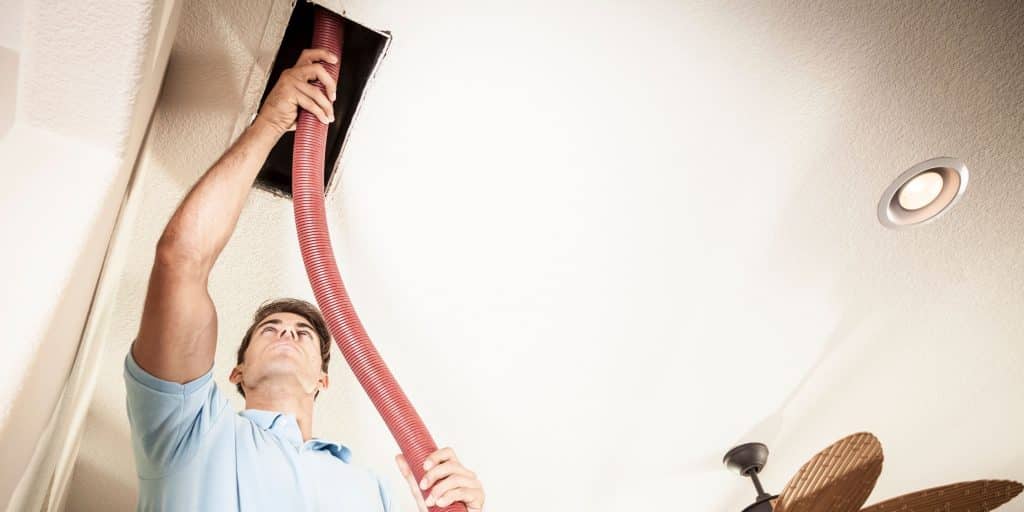Ducts are channels that transport heated or cooled air across a structure. Eventually, dust, dirt, mold, pollens, and other contaminants can accumulate in the interior of the ductwork. Many homeowners are still asking if it is possible to clean the air ducts to minimize dust around the house. Based on the points above, let’s look at some issues related to air duct cleaning and dust removal.
How Dust Gets Into Air Ducts

There are a few ways that dust and other particles make their way into air ductwork:
Air Circulation
Whenever the air flows through ducts, it sucks in tiny fibers, soil particles, pet dander, and other debris from the rooms. These particles then settle and are lodged in the ducts for months and perhaps years.
Pests and Rodents
Insects and rodents can squeeze themselves into the ducts. They can contribute hair and waste products, which are potential debris. Fiberglass, paper, dust, and other nesting materials are cleaned through ducts.
Improper Filtering
If it weren’t for filters, dust and other pollutants would otherwise be channeled to the ducts. If filters are missing or damaged or are not of the correct size for the duct, then impurities will leak through the filter and remain in the ducts.
Does Air Duct Cleaning Get Rid of Dust?

Removing all dust and debris from ductwork is practically impossible because some dust falls to the lower portions of the ductwork or even settles there as dust particles accumulate at the bottom.
For dust reduction:
Remove Built-Up Contaminants
Clean with a single wipe or brush that removes dust, dirt, pollen, and pet dander. Dusting out the ducts alone is not enough to eliminate the particles that stick on the liner surfaces.
Chemical Controlling of Antimicrobial Agents
Chemical duct cleaners use disinfectant to sanitize them, registered by the environmental protection agency. There is evidence that this chemical treatment can limit microbial growth within the ventilation systems.
Seal Ductwork Gaps
Exterior elements can enter through cracks and holes or if the joints come off the ductwork system. Any gap observed while cleaning will be well sealed by any standard cleaner that you hire. This will also help preclude new contaminants from entering from there onwards.
Suitable High-Efficiency Air Filters
Although air duct cleaning offers such an approach to improving the cleanliness of the space, dust will settle on the surface again over time due to natural user activities. The next course of action is to change the air filter to maintain acceptable dust levels, which is highly advisable.
Compare Filter Types
The Minimum Efficiency Reporting Value (MERV) measures its ability to block particles ranging from 1-16. Standard filters usually have a MERV rating of between 1- 4. If you want absolute quality of dust collection, then pleated filters with a MERV rating of 13 or above are ideal.
Change Filters Routinely
An air filter gathers more particulates the longer it operates. Most importantly, adhering to the manufacturer’s change schedule is crucial. To help avoid contamination of the ducts between professional cleanings, filters should be checked monthly and, if necessary, replaced.
Consider a Media Filter
For severe allergies a HEPA media filter will be able to reduce up to 99 percent of airborne allergens and dust. While costing more than standard air filters, they provide better overall daily air purging ability.
Possible Risks of Air Duct Cleaning
While cleaning HVAC ductwork does help capture dust, there are a few downsides to consider as well:
We know that cleaning ductwork does not eliminate all indoor dust.
Ductwork is shown to only be partially responsible for the amount of dust in homes’ interiors. Cleaning the ducts will not eradicate the source of dust and fur from pets, smoke and grease particulates from cooking, debris from craft working, and other routine activities.
Short-Term Rise of Airborne Dust
Cleaning the duct can disperse some debris in the cleaning process. This could circulate more dust until it is trapped in the primary air filter. People susceptible to and bothered by dust should perhaps not move back into the home the same day that the duct was cleaned.
Upfront Cost
Air duct cleaning service costs homeowners several hundred dollars for an HVAC contractor to complete. For homeowners who are working on a small budget, this may not be financially viable. Getting your ducts cleaned should be a priority, however, if any person in your household has a breathing issue or severe allergies.
How to Choose an Air Duct Cleaning Company
For duct cleaning, the qualifications of providers are not all strictly regulated; so, be sure to select a trustworthy provider.
When evaluating companies, ask about:
-Number of years performing deep cleaning with focus on the ventilation systems
-The cleaning method or equipment they use
-If they conduct any test or repair particularly during washing
-If they apply an EPA registered sanitizing agent
-Amount of experience for their technicians
-Industry trade associations such as NADCA
Regular Air Duct Cleaning and Maintenance Schedule
While the EPA and other public health agencies state that air duct cleaning can help rid your home of dust and air particulates, to keep ventilation systems running cleanly, the Environmental Protection Agency recommends:
-Cleaning air ducts professionally under normal usage every 3-5 years.
-Cutting back on microbes by cleaning cooling coils and drain pans once a year
-Cleaning furnace filters and vacuuming air filters once a month and changing them at least once in between cleanings
These actions aforementioned will be especially useful if moving into a new house or after any construction has been done on the home.
Regularly cleaning ducts, replacing air filters often, and sealing leaks will all prevent dust buildup. Combined with daily dusting, wet mopping of floors, and routine cleaning, it is the best approach to proper dust maintenance within your home environment.



Leave A Comment